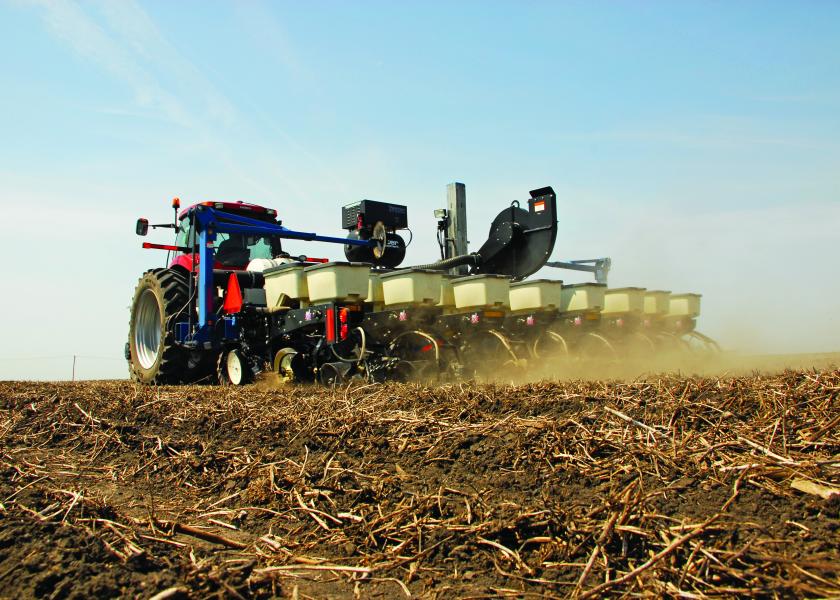Late Planting: Don’t Hit the Panic Button Yet

Nerves are at a high as farmers near the close of the optimal planting window—May 20, on average. With more rain in the forecast you might be wondering just how long it will take to catch up, or if you can.
“We’re behind nationally, although not dramatically,” says Scott Irwin University of Illinois economist with Farmdoc Daily. “Six percent of the U.S. corn crop is planted compared to the 5-year-average of 12% as of last Sunday.”
Illinois is even more behind, at just 1% planted compared to the 5-year average of 17%. The state is inundated with rain and so are many other states—not to mention a potential of up to 16 million acres damaged by historic flooding along the Missouri river, according to Farm Market iD.
But if poor weather steps aside it won’t take long for U.S. farmers to catch up and even exceed planting numbers.
“I’ve been tracking corn planting progress for the past five years,” says Mark Licht, Iowa State University Extension agronomist. “I use prospective plating to get acres and suitable days and calculate how many acres can be planted per day. For corn, it peaks between 1 and 1.25 million acres per day—that means just over 13 days to get planted.”
It’s the same for soybeans—about 14 days to fully planted. Interestingly enough, this number hasn’t changed in more than 30 years.

“People are often shocked to hear that number is fairly flat over the past 40 years,” Irwin says. “That’s because today we have 24-row planters, but it’s covering the same acreage as three farmers with 8-row did 30 years ago. In the 1980s it took 14 days to plant the crop and it’s the same today.”
While equipment has gotten bigger so have farms. Instead of planting 500 acres with an 8-row or even 12-row planter, one farmer could be planting 2,000 or more acres with a 24-row. Because farmers can only be in one place at a time, that means the time dedicated to planting hasn’t really changed.
With many states behind the “normal” planting rates is it possible to catch up? Like many factors in farming, it’s all up to Mother Nature.
“Right now, I would suspect that the Central Iowa to Eastern Iowa region will be planted pretty timely—by the 10th of May if all goes well,” Licht says. “I’m anticipating more delays where we had flooding along the Missouri River. We don’t have to worry yet—I think the next seven- to 10-days we’ll get good planting in.”
Farmers won’t see big yield hits from late planting until May 20 in corn, so there is more than three weeks left—giving farmers some leeway if weather isn’t perfect.

However, there is more to growing a crop than just planting date, Irwin reminds farmers.
“In 2009 we had historically late planting but had, at the time, record corn yields,” he says. “On the other hand, the earliest planting on record in Illinois was in 2012 and drought torched the crop and put yields at just over 100 bu. per acre. Planting date is just one of many factors that impacts corn yield.”
Keep agronomics in mind and be willing to be patient for optimal planting conditions.
“If you have to wait a day to half a day longer to get in the field versus going in earlier and causing compaction you’re better off,” Licht says. “Planting early could cause more harm than good if you don’t get good root growth, tomahawk roots can decrease yields and can them diminish even more if you get lodging.”







